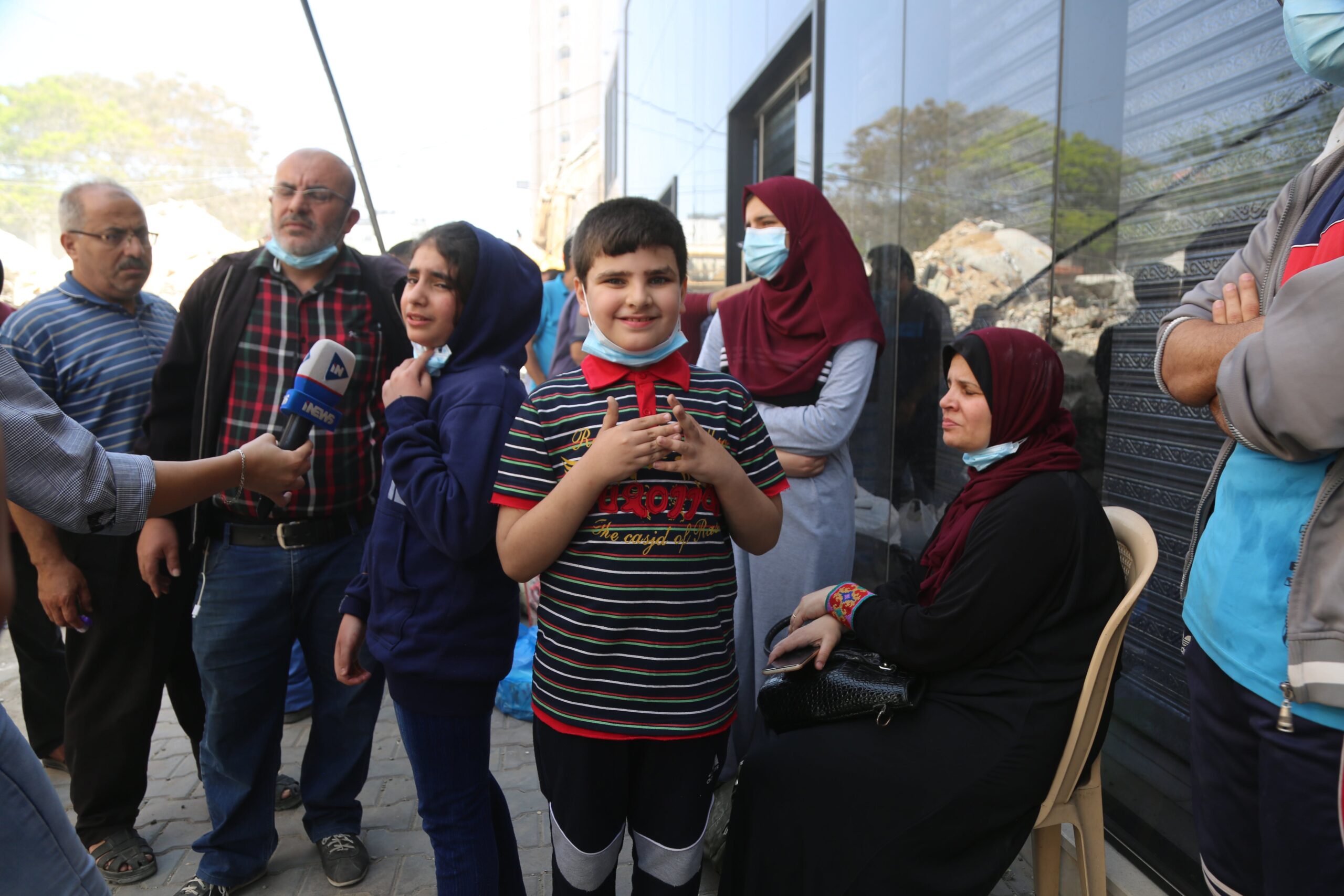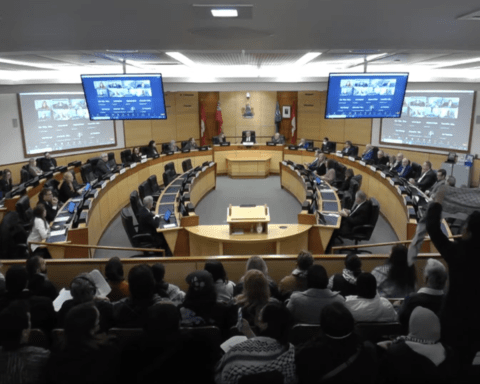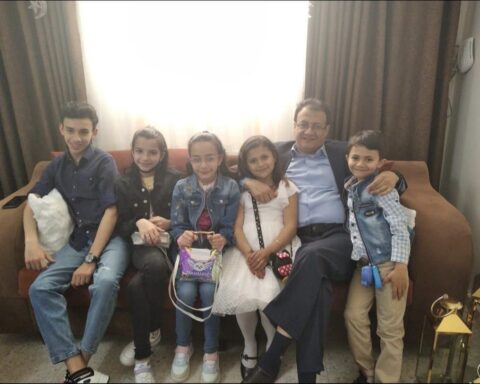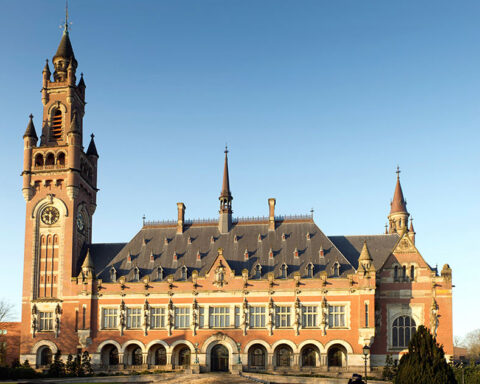The temporary pathway allowing a maximum of 1,000 Canadian relatives in Gaza to receive study and work permits this year has a lower cap than similar humanitarian visa programs, government data and expert opinion indicates.
Immigration, Refugee, and Citizenship Canada (IRCC) has created 12 temporary pathways for specific humanitarian crises around the world since 2011, the federal agency’s public statements showed in an analysis by New Canadian Media aided by Toronto Metropolitan University.
Five of those programs included limits on how many applicants would get accepted.
The 1,000 asylum-seeker limit on Gazan family members of Canadians is lower than any of the comparable humanitarian pathways, explained Anna Triandafyllidou, Canada Excellence Research Chair at Toronto Metropolitan University.
Out of the 12 programs, the Gaza pathway is only comparable with humanitarian visas for Lebanon (Beirut blast), Hong Kong (Chinese government crackdown), Sudan (civil war), and Turkey/Syria (earthquake), Triandafyllidou said.
That’s because those programs are designed to respond to a sudden political and security crisis, and are targeted at extended family members because they’ll have support in Canada, according to Triandafyllidou.
None of those similar pathways had caps on the number of people accepted, IRCC data shows.
“Within these very specific programs, it is only the Gazans who are going through intensive security scrutiny because of the fear of links with Hamas,” Triandafyllidou said.
The pathway for Gazans was created in response to the humanitarian catastrophe, according to IRCC.
Program applicants will undergo extensive security vetting by Canada Border Services Agency, Canadian Security Intelligence Service, and the Immigration Department, according to Matthew Krupovich, a communications advisor at IRCC.
Part of that screening includes a new form requiring applicants to list all their phone numbers, e-mail addresses, social media accounts, scars or injuries, and disciplinary issues that they had at work since they were 16-years-old.
The IRCC said in an email to New Canadian Media that it was “flexible” on the 1,000 asylum-seeker cap, but the program will expire on Jan. 5, 2025 regardless of how many people are accepted. 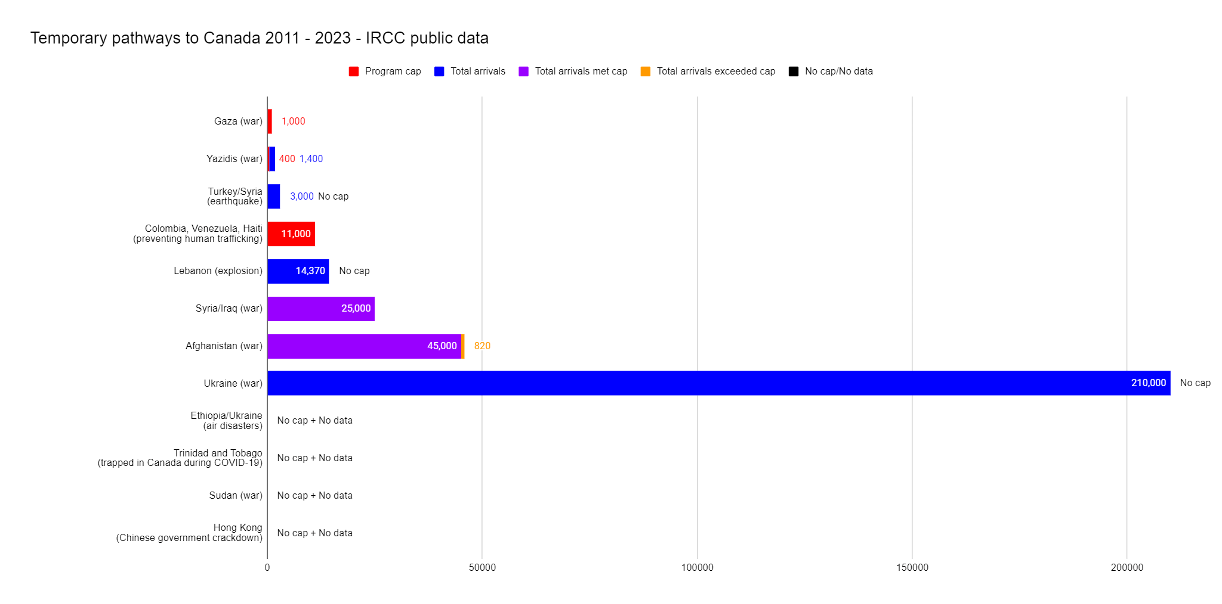
Gazans who are spouses, common-law partners, children, grandchildren, siblings, parents or grandparents of Canadian citizens or permanent residents qualify for the pathway.
Once in Canada, Gazans can apply for student and work permits free of charge through the program.
The Hamas-led Gaza health ministry says at least 25,700 civilians have been killed by Israeli airstrikes since Hamas attacked Israel on Oct. 7, 2023.
Gaza has a population of roughly 2 million, according to Statista and the US State Department.
Both Israelis and Palestinians in Canada, who are immediate family members of Canadian citizens or permanent residents, are eligible for free student and work permits under a separate temporary measure announced on Dec. 21, 2023.
Pathway Particularities
Among all humanitarian visa programs, the Gaza pathway has the second-lowest cap on accepted applications since 2011, the furthest back publicly listed data is available.
A pathway for Yazidis and other survivors of Daesh (otherwise known as ISIS) in Syria and Iraq offered just 400 asylum-seeker spots, technically making it the smallest program in the past 13 years.
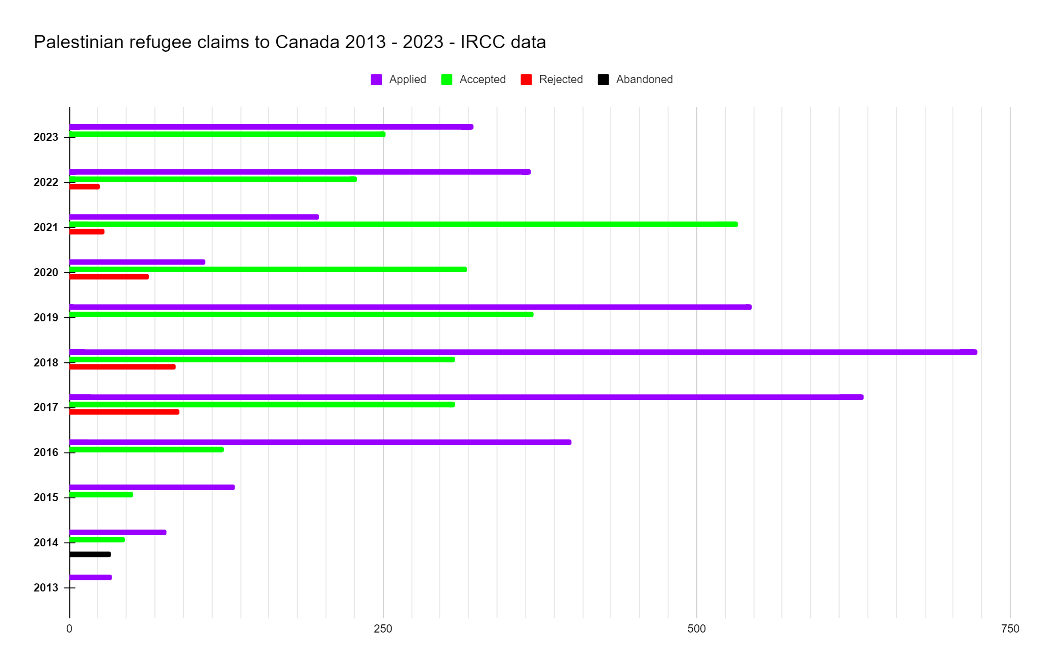 However, IRCC states that Canada had already accepted 1,400 Daesh survivors, including Yazidis, into the country before the pathway was opened.
However, IRCC states that Canada had already accepted 1,400 Daesh survivors, including Yazidis, into the country before the pathway was opened.
The Yazidi pathway is part of the broader Syrian settlement strategy, explained Triandafyllidou, differentiating the program from the one offered to Gazans.
Before the 2015 federal election, the Syrian asylum-seeker pathway initially offered 1,000 spots in Canada, before being expanded to 25,000 shortly after Justin Trudeau’s Liberal party took office.
Triandafyllidou said the other pathways since 2011 weren’t comparable to the Gaza program because they’re larger undertakings that address Canada’s role in the world, rather than specific crises.
The Colombia, Venezuela, Haiti pathway was to address Canada’s responsibilities in the Americas, Triandafyllidou explained, while the Ukraine pathway was to counter Russia.
The Ukraine pathway is the only large asylum program without a cap, said Triandafyllidou, and the Afghanistan program was aimed at bringing in skilled professionals.
Former interpreters for Canadian Armed Forces in Afghanistan, their family members, and privately sponsored vulnerable Afghans were given a 40,000-person cap by IRCC back in 2021.
Family members of Canadians in Afghanistan had a 5,000-person cap and by March 2023, Canada had admitted 45,820 Afghans under all the available pathways.
The Afghan asylum-seeker pathway exceeded its cap by 820, which gives an indication of the “flexibility” the IRCC exercises in humanitarian pathways.
Triandafyllidou explained that humanitarian visa pathways are a unique feature of Canadian immigration policy.
“This policy really borders between immigration and asylum,” Triandafyllidou said.
“These people do not come as refugees but they are people who are forced to leave their countries.”
Outside of special pathways, Canada has admitted 2,533 Palestinian refugees since 2013, averaging 253 per year.
Palestinians made up 0.9 per cent of all refugees to Canada in 2023.
Unanswered Questions
IRCC did not answer questions about how the 1,000 asylum-seeker cap in the Gaza pathway measures against other programs, when contacted by New Canadian Media.
Questions concerning the all-time lowest caps for temporary pathways, if Gazans had been offered a program in the past, and how many Canadian relatives are estimated to be in Gaza were left similarly unanswered by the agency.
But the federal government isn’t the only body keeping tight lipped about the Gaza pathway.
Canadians for Justice and Peace in the Middle East (CPJME) and the Canadian Council for Refugees didn’t return multiple requests for comment.
The Canadian Museum of Immigration at Pier 21 in Halifax said they don’t keep historic records on those who come to Canada through temporary pathways.
The volunteer-run Canadian Immigration Historical Society was unable to look into past humanitarian programs due to a lack of capacity.
New Canadian Media was able to identify the 12 temporary humanitarian pathways from the past 13 years in collaboration with Triandafyllidou and by going through IRCC’s online list of public statements.
William Koblensky Varela is a journalist who reports on local news, finance, and politics. He has worked for Metroland Media, BNN Bloomberg, and Carbon Pulse among others.

